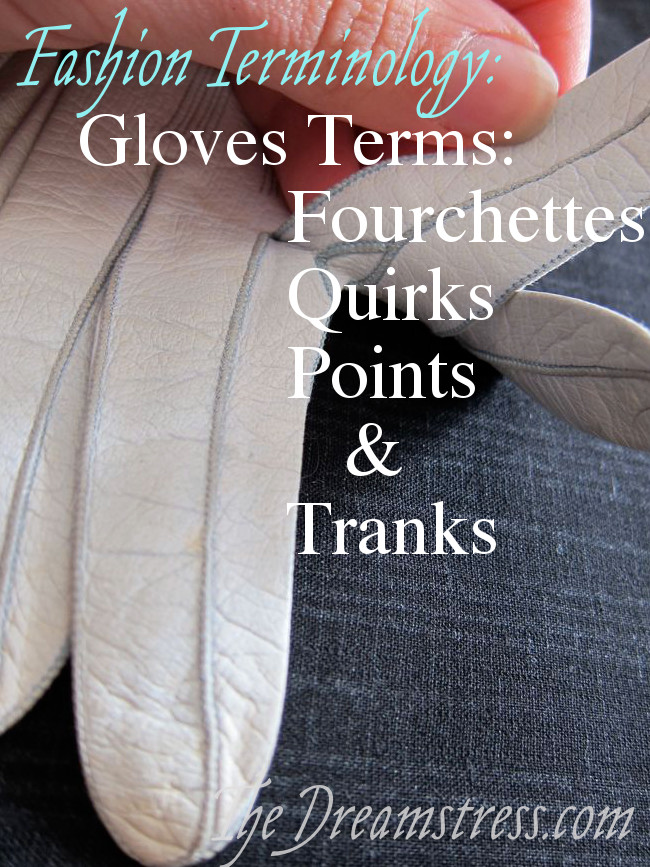Terminology: Fourchette, quirks and other glove terms
For this terminology post, we’re looking at glove terms: fourchettes, quirks, tranks and points. I love these words just because they are so random and specific. Other than glove makers and fashion historians, who would know that there are specific words for the different parts of gloves? The main piece of a glove, with the back and front of the glove and the tops and bottoms of the fingers all cut in one, with only one side seam, is the trank. It’s shown in pretty pink in the photo above. Going between the fingers, and attached to the trank, is the fourchette (in lovely lavender in the coloured photo above), also called the fork or forge which is: A forked strip of material forming the sides of two adjacent fingers of a glove In other words, this bit: It is from the French, for forked, because a fourchette is forked, and allows the fingers to fork. Some fourchettes have an extra little V gusset at the bottom, called a quirk (shown in beautiful blue in …

